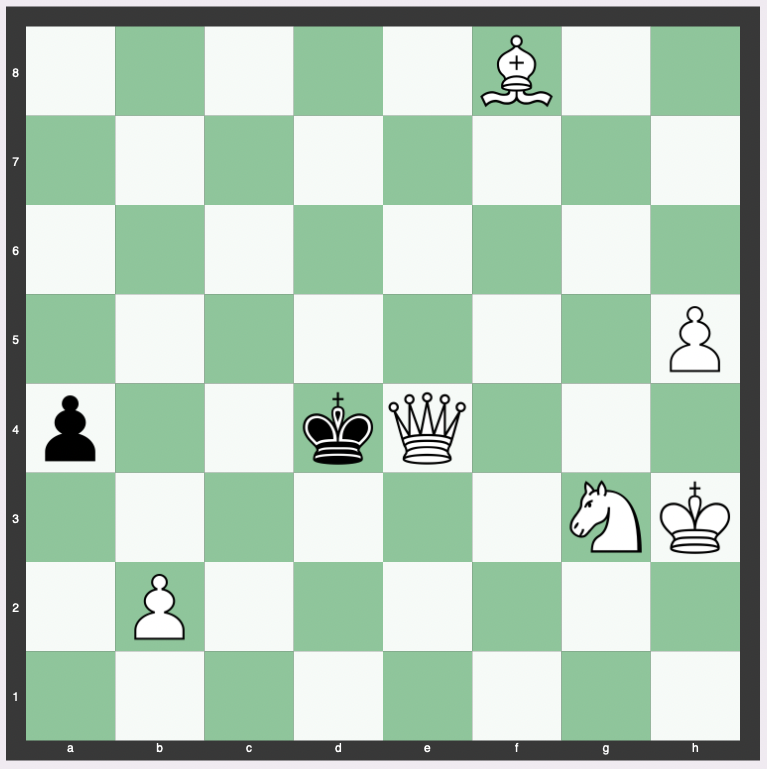Forsyth–Edwards Notation (FEN) is a universally recognized standard notation used to describe a specific board position in a chess game.
It holds all the essential information needed to resume a game from a particular position, ensuring continuity and accurate gameplay.
Historical Background
The roots of FEN trace back to a system created by David Forsyth, a Scottish newspaper journalist.
His approach laid the foundation for the modern FEN, allowing for the clear and concise representation of chess game positions.
FEN in Stockfish
In the context of Stockfish, a powerful open-source chess engine, FEN allows users to set up a specific board position to analyze various strategies and outcomes.
By providing a FEN, players can explore different moves and tactics from that exact position, enhancing their understanding and improving their gameplay.
Structure of FEN
FEN encapsulates the following information:
- The placement of pieces on the board.
- The active color (white or black to move).
- Castling availability.
- En passant target square.
- Halfmove clock.
- Fullmove number.
Each of these elements is important for accurately depicting a game position, ensuring that players can seamlessly continue the game with all contextual information intact.
FEN String Example
An example FEN string is:
5B2/8/8/7P/p2kQ3/6NK/1P6/8 b – –
This FEN string corresponds to the position in the header image to this article.
PGN: Comprehensive Game Information
What is PGN?
PGN is a standard format for representing chess games. It encompasses not only the moves made during a game but also a wealth of other information.
Information Contained in PGN
- Player Details: Names of the players involved in the game.
- Ratings: The ratings of the players.
- Date: The date the game was played.
- Event Details: Information about the event or tournament.
- Moves: All the moves made during the game.
- Variations: Any variations that occurred during the game.
- Comments: Additional comments or notes about the game.
Purpose of PGN
PGN files serve as comprehensive records of chess games, allowing for detailed analysis, study, and archiving of games for future reference.
FEN vs. PGN
Let’s look into the differences between FEN and PGN to gain a clearer insight into their roles and functionalities.
FEN (Forsyth–Edwards Notation)
Definition
FEN is a standard notation used to describe a specific board position in a chess game.
It is concise and provides all the necessary information to restart a game from a particular position.
Information Included
- Piece Placement: Details about the position of each piece on the board.
- Active Color: Information about whose turn it is to move.
- Castling Availability: Indicates whether castling is possible.
- Additional Positional Information: Includes en passant target square, halfmove clock, and fullmove number.
Use Cases
- Positional Analysis: Ideal for analyzing specific positions and exploring potential strategies and outcomes.
- Game Continuation: Allows players to resume a game from a particular position.
PGN (Portable Game Notation)
Definition
PGN is a comprehensive and standard format for recording chess games.
It holds complete game information, making it suitable for archiving and studying games in detail.
Information Included
- Player Details: Names of the players involved in the game.
- Player Ratings: The ratings of the players.
- Date and Event Details: Information about when and where the game was played.
- Game Moves: All the moves made during the game.
- Variations and Comments: Includes any variations that occurred and additional comments or notes about the game.
Use Cases
- Game Analysis: Perfect for a detailed analysis of an entire game.
- Game Archiving: Suitable for keeping records of games for future reference and study.
- Game Sharing: Allows players to share game details, including moves and comments, with others.
FEN & PGN on Lichess
You can see FEN and PGN notation on Lichess on the analysis board part of the website:

FAQs – FEN
What is FEN in chess?
FEN is a notation standard used to describe a specific board position in a chess game.
Information Contained in FEN
- Piece Placement: The position of the pieces on the board.
- Active Color: Indicates whose turn it is to move.
- Castling Rights: Information about the availability of castling.
- Other Positional Details: Additional details such as en passant target square, halfmove clock, and fullmove number.
Purpose of FEN
FEN is used to convey all the necessary information to restart a game from a particular position.
It is especially useful in analyzing specific positions and exploring potential strategies and outcomes from that position.
How are FEN and PGN different?
While PGN provides a holistic view of an entire chess game, including all ancillary information and moves, FEN focuses solely on depicting a particular board position in detail.
Both notations are invaluable in their own right, offering different perspectives and insights into the game of chess.
In short, FEN and PGN serve different but complementary roles in chess:
- FEN is focused on representing a specific game position, providing all the necessary details for analysis and continuation from that point.
- PGN, on the other hand, offers a comprehensive view of an entire game, including all moves, player details, and additional game information.
Conclusion
Forsyth–Edwards Notation (FEN) is an indispensable tool in the world of chess, offering a systematic and efficient way to represent game positions.
Its integration in platforms like Stockfish further underscores its significance, providing players and analysts with a reliable means to explore and understand various aspects of chess gameplay.


